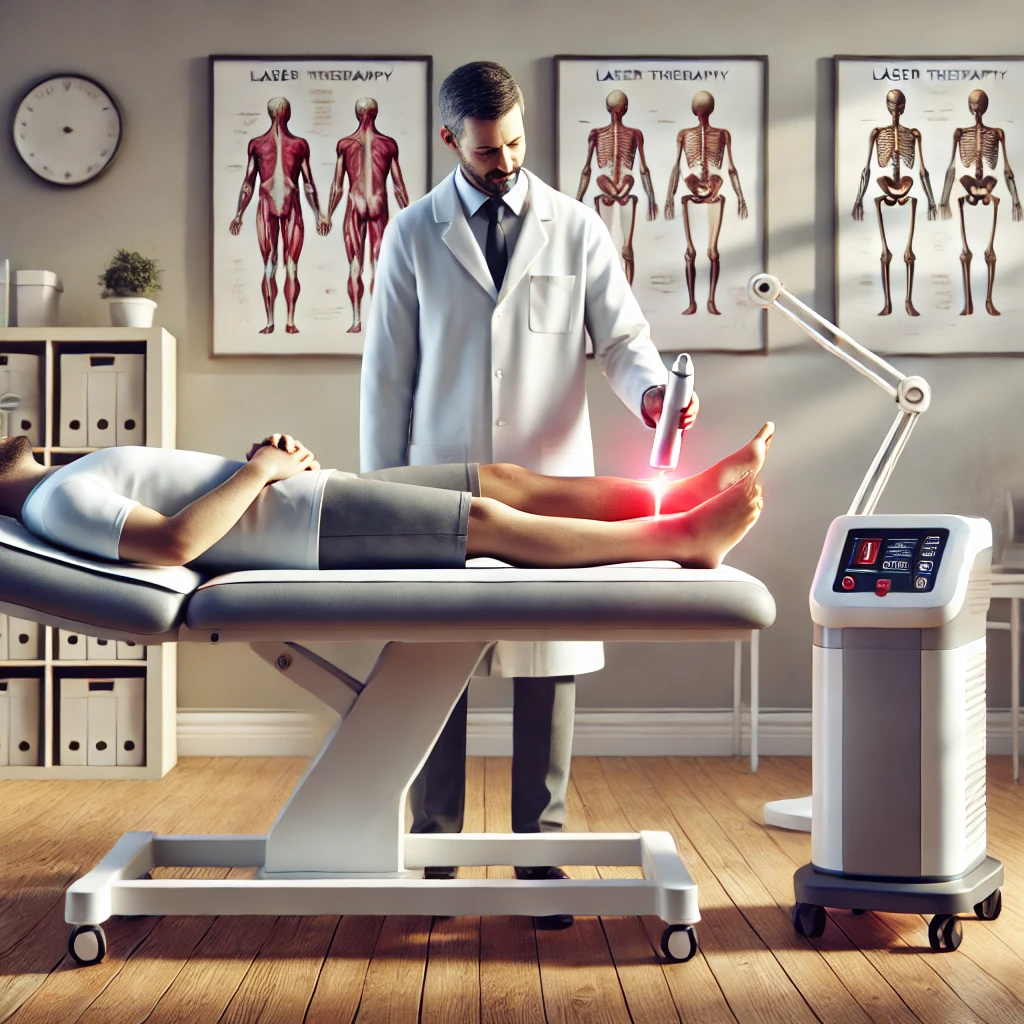Accelerating Recovery from an Achilles Tendon Tear: A Remarkable PBM and PRF Case

Introduction
Partial Achilles tendon tears are painful, slow to heal, and notorious for keeping patients sidelined for months. The normal recovery process often involves weeks in a boot, extensive physical therapy, and a long wait before normal walking returns. Even after healing, many patients are left with scar-like callus formation at the injury site, which can limit mobility and increase the risk of re-injury.
This is the story of a patient who not only defied those odds — but did so in a matter of weeks — using a combination of photobiomodulation therapy (PBM) and platelet-rich fibrin (PRF) as part of his regenerative medicine plan.
The Patient’s Injury
The patient came to me after sustaining a partial Achilles tendon tear. He was placed in a walking boot and began a course of physical therapy to gradually restore function. Like most Achilles injuries, his was expected to take several months before he could walk normally without significant discomfort.
During one of his PT sessions, he asked me:
“Can we try to speed up my healing using regenerative medicine?”
I told him yes — and we began adding targeted PBM sessions to his recovery plan.
The Photobiomodulation Process
PBM uses specific wavelengths of red and near-infrared light to penetrate tissues and:
- Stimulate mitochondrial energy production (ATP)
- Increase microcirculation and nutrient delivery
- Reduce inflammation and oxidative stress
- Accelerate collagen synthesis and tissue repair
These effects are particularly powerful in tendon injuries, where the blood supply is naturally poor and healing is slow.
The Treatment Timeline and Results
First PBM Session
As is typical with PBM, the first treatment didn’t produce dramatic changes. The patient still wore his boot and felt the same level of restriction in his movement.
Second PBM Session
After his second PBM treatment, something remarkable happened.
A few days later, the patient told me:
“I woke up one morning and forgot to put my boot on. I didn’t even notice until I got in the shower and twisted my ankle slightly. I had no pain until that moment — and even then, it was mild.”
This was just two weeks after his tear and after only two PBM treatments — far ahead of the normal recovery curve for such an injury.
Adding PRF to the Regenerative Plan
After his third PBM treatment, we decided to enhance his recovery further by adding platelet-rich fibrin (PRF) directly near the site of his Achilles tear.
PRF is derived from the patient’s own blood and contains a concentrated mix of platelets, growth factors, and fibrin matrix that promote natural tissue regeneration. Injecting PRF into injured areas provides a biological boost to the healing process, stimulating collagen production and improving tendon fiber alignment.
Completing the PBM Series
The patient completed his fourth PBM session within a two-week treatment window. This combination of PBM and PRF had him feeling stronger and more confident in his movement with each session.
The One-Month Follow-Up
One month later, he returned for a follow-up with an incredible update. His physical therapist had performed an ultrasound of his Achilles tendon and reported:
- No callus formation at the site of the injury.
This was extraordinary. Typically, after a partial tendon tear, healing is accompanied by a callus-like scar formation, which is the body’s way of reinforcing the damaged area. While functional, this scar tissue can be bulky, less flexible, and more prone to future problems.
The absence of a callus suggested that his tendon fibers had healed in a more natural, organized way — without the excessive scar tissue that often accompanies tendon healing.
By this point, he was walking normally within just 3–4 weeks from his initial injury — a recovery timeline that is dramatically faster than average.
Why PBM and PRF Work So Well Together
The success of this case lies in the synergy between PBM and PRF:
- PBM jumpstarts the healing process, energizing cells, reducing inflammation, and accelerating collagen formation.
- PRF delivers the body’s own growth factors directly to the injury site, guiding tissue repair toward a healthier, more functional outcome.
Together, they support true tissue regeneration rather than just patchwork scar formation.
My Takeaway as a Clinician
I’ve seen countless patients benefit from PBM over the years for arthritis, joint pain, tendon injuries, and post-surgical recovery. What makes this case stand out is the combination of:
- Rapid symptom relief
- Dramatically shortened recovery time
- Objective imaging confirmation of healthy healing without excessive scar tissue
It reinforces what I tell all my patients:
“When you use treatments that work with your body’s natural healing mechanisms, you set yourself up for the best possible long-term results.”
Who Can Benefit from This Approach?
This type of regenerative protocol may be helpful for:
- Acute tendon injuries (Achilles, rotator cuff, elbow tendons)
- Post-surgical healing to reduce scar formation and speed recovery
- Chronic tendonitis or tendinopathy that has failed other treatments
- Athletes and active individuals who want to return to full function faster
Conclusion
A partial Achilles tear can sideline patients for months, but with the right regenerative approach, recovery can be dramatically accelerated.
In this case, four PBM sessions combined with a single PRF injection resulted in:
- Pain-free walking within 3–4 weeks
- No callus (scar tissue) formation on follow-up imaging
- A faster, cleaner healing process than expected
At Sheen Vein and Cosmetics, I use PBM and regenerative medicine not just to mask symptoms, but to help the body heal in a way that preserves long-term function and mobility.
If you’ve suffered a tendon injury and want to explore advanced, biologically sound healing options, PBM and PRF may be the combination that gets you back to living — and moving — sooner.
Dr. Vidal Sheen, MD, RVT, RPVI
Board-Certified in Internal Medicine and Phlebology
Specializing in PBM and Regenerative Medicine for Musculoskeletal Healing